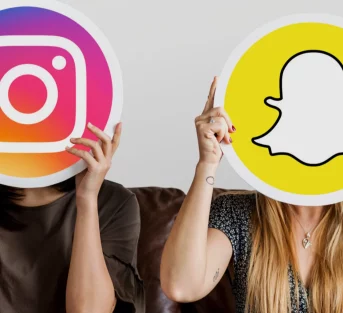Just when you think you’ve figured out the social media platforms that matter, a new one sneaks in and flips the script. TikTok did it with short-form video. Clubhouse briefly shook things up with audio. And now, in 2025, a fresh wave of platforms is quietly capturing attention, not with noise, but with purpose.
We’re seeing a shift. People are growing tired of endless algorithm-driven feeds and content that feels more curated than real.
In this article, we’re looking at the emerging social media platforms. What makes them different? Why are users flocking to them? And more importantly, how can you use them to get ahead before everyone else catches on?
TL;DR
- Social media in 2025 is moving toward niche platforms, authentic content, and tighter communities.
- Key trends include audio-first features, AI-powered personalization, and creator monetization tools.
- Fast-growing platforms like Mastodon, Bluesky, and Threads are offering fresh alternatives to mainstream apps.
- Gen Z is favoring platforms that feel real, fast, and visually engaging—like TikTok, YouTube Shorts, and Instagram Reels.
- Brands and entrepreneurs have big opportunities in early adoption, micro-community building, and social commerce.
Appscrip helps businesses launch custom social media apps with features like subscriptions, live streaming, and group chat—perfect for getting ahead in this evolving space.
Understanding the Rise of Emerging Social Media Platforms
Factors Driving the Growth of New Platforms
Social media in 2025 feels a lot different than it did even just a few years ago. The big names still dominate headlines but users, especially younger ones, are looking for something more tailored and less bloated. According to a recent Deloitte study, over 60% of Gen Z users now say they prefer smaller, interest-based communities over massive, all-purpose platforms. That’s a big signal that something’s changing.
So, what’s fueling this shift? It comes down to a few important trends:
- User demand for relevance: People want feeds that speak to them directly. Niche platforms make it easier to find content and conversations that actually matter to their daily lives.
- Privacy and authenticity: The younger crowd is moving away from heavily filtered lives and algorithm-controlled feeds. They want spaces that feel safe, real, and less performative.
- New tech behind the scenes: From smarter AI to easier blockchain integration and faster 5G connectivity, tech is lowering the barrier to entry for new platforms with unique models.
- Cultural fragmentation: Online communities are getting more specific—from indie book clubs to local fashion circles, and platforms that embrace this fragmentation are seeing real traction.
Importance for Product Innovators and Entrepreneurs
If you’re a startup founder, product builder, or even a solo creator, these platforms offer more than just a place to promote your work. They’re playgrounds for fast testing, instant feedback, and building strong user relationships from day one. Getting in early means you can actually be part of shaping the culture of the platform, rather than trying to keep up later.
Here’s why these platforms are such a goldmine:
- Faster feedback loops: Smaller, focused communities are incredibly responsive. That means you can test ideas, content, or features and hear back within hours, not weeks.
- More organic reach: On newer platforms, you don’t need to fight algorithms or pay to get seen. Early users often get more visibility just by showing up and engaging.
- Easier targeting: When the audience is niche, your messaging doesn’t have to be generic. You can speak their language and address specific needs.
- Growth-friendly partnerships: Many emerging platforms are open to collaborations, especially if you’re helping bring more users or unique content to the table.
Key Emerging Social Media Platforms to Watch in 2025
Mastodon
Mastodon has been quietly growing for years, but 2025 is the year it finally breaks into the mainstream. Unlike traditional platforms, it’s decentralized, meaning no single company controls it. Users join independent servers based on shared interests, which makes the experience feel more personal and less noisy.
Why it’s gaining traction:
- Users tired of corporate-run platforms are drawn to its open-source structure
- Strong communities among developers, journalists, and digital privacy advocates
- Minimal algorithm interference and greater content control
Spill
Spill is built by former Twitter employees and has quickly caught the attention of Gen Z and Black creators. It blends meme culture, real-time reactions, and community commentary in a fast-moving, yet welcoming space.
What sets it apart:
- Prioritizes diverse voices and inclusive moderation
- Combines Twitter-like updates with TikTok-style energy
- Algorithms designed for safety and culture-building
Bluesky
Bluesky started as a Twitter-backed initiative and has grown into a serious alternative for users seeking a more open, decentralized social experience. Built on the AT Protocol, it gives users more control over algorithms and moderation.
Why it’s turning heads:
- Decentralized structure with open-source principles
- Focus on transparency and user choice
- Familiar microblogging format that feels like early Twitter
BeReal
BeReal made waves with its push for unfiltered moments, and it’s still going strong in 2025. Users are prompted once a day to take a photo with both front and back cameras, capturing a candid look at their real lives.
Why it’s sticking around:
- Promotes authenticity and reduces social pressure
- Strong adoption among college students and Gen Z
- Feels refreshingly honest in a highly curated content world
Lemon8
Lemon8, from ByteDance, combines the look of Pinterest with lifestyle blogging. It’s a curated, photo-first space where creators post tips, reviews, and personal inspiration.
Why creators love it:
- Emphasis on aesthetics without the pressure of video
- Popular for beauty, wellness, and fashion content
- Feels more relaxed than TikTok or Instagram
Sunroom
Sunroom is built for creators, specifically women and nonbinary folks who want to share exclusive content in a safer, more empowering space.
Why it’s different:
- Prioritizes user safety and mental wellness
- Built-in monetization tools like subscriptions and tipping
- Stands out in the crowded creator app market
Threads (by Instagram)
Launched in 2023, Threads is Meta’s answer to X (Formerly Twitter). It’s evolving into a place for quick updates, casual thoughts, and behind-the-scenes brand moments.
Why Threads is growing:
- Feels like a modern version of X, built for Instagram natives
- Great for brand storytelling and informal content
- Integrated with Instagram, making it easy to cross-post and reach new audiences
Trends Shaping the Future of Social Media Platforms
Audio-first experiences
While Clubhouse fizzled out of the headlines, the audio wave it started is still rolling. Social apps are now integrating voice notes, drop-in chats, and sound-based engagement right into their core features. According to Edison Research, 43% of users say they feel more emotionally connected to voice-based interaction compared to text or video. That sense of connection is driving higher engagement, especially in platforms targeting younger, on-the-go users.
Why audio is sticking around:
- Voice feels more personal and human than text
- Easier to consume while multitasking
- Great for creators who prefer casual, off-camera formats
AI-driven personalization
If your feed feels creepily accurate lately, it’s because platforms are leaning hard into AI. Generative tools and predictive algorithms are shaping content delivery like never before. Whether it’s mood-based suggestions or interest-level matching, AI is powering highly individualized experiences. Users are spending more time on platforms that feel like they “get them” and that’s no accident.
Why it matters:
- AI curates content more precisely, reducing irrelevant noise
- Drives up retention and time-on-platform metrics
- Lets creators reach the right audience faster
Creator-led ecosystems
The creator economy is no longer about mega influencers with millions of followers. It’s now built around everyday creators with tight-knit audiences. Social platforms are racing to provide better tools for monetization, content control, and community management.
Why this trend is huge:
- Platforms like Sunroom and Patreon prove that smaller creators want and need: sustainable income models
- Subscription, tipping, and digital product features are becoming the norm
- Creator-first design leads to better platform loyalty
Niche community building
People want to build connections, not just content. Social platforms that foster smaller, purpose-driven communities are seeing higher engagement and longer session times. Whether it’s a local book club or a global wellness group, platforms like Geneva and Discord are making it easier to bring like-minded users together.
Why users are leaning into niches:
- Feels more meaningful than mass-audience posts
- Encourages contribution, not just consumption
- Stronger sense of belonging and trust
Opportunities for Media Brands and Entrepreneurs
Social commerce integration
The buying journey on social media now happens without ever leaving the app. From product tags to creator-driven shops, social commerce is becoming the norm. Platforms like Instagram, and TikTok are already seeing strong traction in this space.
Why this shift matters:
- According to Shopify, 43% of Gen Z prefers finding products on social media
- Integrated shopping experiences reduce friction and boost conversion
- Creators are becoming key players in the sales funnel
Early-mover advantage on new platforms
Getting in early on emerging platforms gives you more visibility with less spend. Organic reach is often highest when platforms are still building their user base, and that’s when smart creators and brands can grow fast with minimal competition.
Why it’s smart to act early:
- Less crowded space means higher engagement
- Helps shape platform culture and build credibility early
- Can generate outsized returns on time and content investment
Building niche communities
If you’re in media, branding, or tech, now’s the time to go deep rather than wide. Emerging platforms are making it easier than ever to create loyal, focused communities. Instead of shouting into the void of a mass audience, brands are finding real value in smaller, more engaged circles. Platforms like Discord and Mastodon give you the tools to build a space that feels personal and purposeful.
Why niche beats mainstream social media:
- Easier to segment your audience and tailor your message
- Encourages long-term engagement through shared interests
- Community-led growth builds trust and reduces ad spend
Collaborations with rising creators
New platforms are filled with rising voices looking to collaborate. Brands can find authentic, aligned creators before they blow up, building relationships that feel genuine instead of transactional.
Why this works:
- More affordable and flexible than legacy influencer deals
- Co-creation feels organic to users
- Early partnerships often lead to long-term brand loyalty
Experimenting with new content formats
Short video loops, audio drops, collaborative posts, rise of new platforms mean new formats. These are perfect testing grounds for ideas that wouldn’t cut through on traditional platforms.
Why this unlocks creative growth:
- Less polished content is often rewarded
- Great way to test brand tone and storytelling techniques
- Helps discover what resonates before scaling
For brands and entrepreneurs, these shifts are less about keeping up and more about getting ahead. If you can build real communities, simplify how your audience shops, and stay open to fresh formats, you’re already playing the next version of the game.
If you’re thinking of creating your own social media app?
Now’s the perfect time—and Appscrip can help you get there faster. We build fully customizable, ready-to-scale social platforms that are packed with features your users actually care about:
- In-app purchases and subscription models for monetization
- Live streaming and real-time engagement tools
- Group chats, audio/video calls, stories, and content moderation
Whether you want to launch a creator community, a niche network, or a new-age content hub, our pre-built solutions give you everything you need to get to market quickly, with tech that’s built to scale.
So, don’t just wait to catch the next wave. Let’s build it. Partner with Appscrip and turn your social media vision into a full-fledged platform that actually makes noise in 2025.





